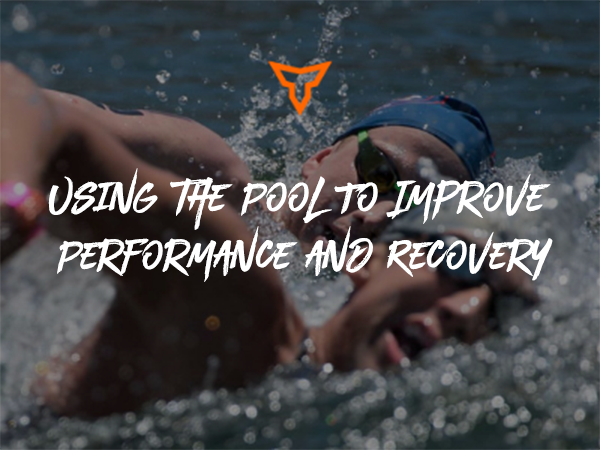Hyperthermia Benefits: Hypertrophy and Heat Acclimation
Summary:
- All exercising humans reach volitional failure when their core temperature reaches 40 Celsius
- Athletes who exercise at high intensities or in the heat benefit from heat acclimation
- Whole Body Hyperthermia (WBH) improves thermoregulation and can help augment the effects of training, including skeletal muscle hypertrophy, increased time to exhaustion during endurance events, and better exercise efficiency
- WBH can be achieved a number of ways, including saunas, hot baths, and infrared blankets
- Key concept is increasing tissue temperature to 40-42 Celsius
- No established protocol for time, temperature, frequency
- Likely maximize benefits with 1-2 saunas or hot baths per week for 20-30 minutes
Have you ever seen an athlete in one of those giant ice baths after a game or practice? Looks horrible, doesn’t it? I was a certified Athletic Trainer, so I filled those tubs with ice in preparation for those poor souls that had to jump in them. With precious few exceptions, everyone hated them.
On the flip side, think about sitting in a hot tub or steam room. You immediately think “that sounds relaxing,” don’t you? I know I absolutely do. But then again, I spent enough winters in New Hampshire and Connecticut to know that I hate being cold.
It turns out I’m not the only one. Your muscles also seem to prefer heat to cold. And it turns out that one or two saunas or hot baths per week could make you a significantly better athlete! Check out some of the top hot tub benefits for athletes….
There are a host of beneficial effects from whole body hyperthermia (WBH), or heating your muscles up. Heat decreases the viscosity of the fluids, so everything moves a little easier. Our blood vessels vasodilate to deliver blood and oxygen to the muscles more quickly. Heat even increases local metabolism, which means more calories burned.
There’s also a bunch of things that happen at the cellular level when you apply heat stress. As the cell temperature reaches 40-42 Celsius, the proteins start to cook like an egg does. As cell temperature continues to rise, you’ll see damage to the chromosomes, changes in plasma fluidity and membrane permeability, inhibition of membrane receptors, and eventually cell death.
In fact, all exercising humans reach what’s called “volitional failure” when their core temperature hits 40 Celsius. That means that universally, when your core temperature reaches 40 C, you are done exerting yourself. There are no exceptions to this rule. Any athlete that trains or competes in the heat will understand why being able to delay this rise in core temperature is extremely important.
In response to intense heat stress, your body produces something called Heat Shock Proteins (HSPs). They are highly-conserved proteins that protect the cells from all kinds of different stresses, including heat. In addition to that, HSPs increase muscle protein synthesis (increased hypertrophy) and protect muscles from atrophy if an athlete gets injured or is immobilized. Over the long term, heat stress will augment some other beneficial adaptations like more capillaries, more mitochondria in the cells to produce energy, better efficiency of the mitochondrial proteins, and improved endurance capacity.
Effects of Whole Body Hyperthermia
- Increased heart rate (approx. 10 beats per 1 degree Fahrenheit)
- Increase in cardiac output
- Increase in number and size of blood vessels
- Generalized vasodilation for heat dissipation
- Increased respiration (5-6 breaths per minute per degree increase in rectal temperature)
- Alkalosis (or a rise in blood pH)
- Increased metabolism
- Lowered threshold of the respiratory center
- Profuse sweating, sodium and possible nitrogen losses due to dehydration
With a hard cap on how high your core temperature can climb, we can train your body’s ability to thermoregulate, allowing you to exert yourself for longer, at higher intensities, without reaching the level of heat exhaustion. Training your body to regulate its temperature better is also known as “heat acclimation.” Just like athletes train at altitude to acclimate to “less oxygen” (don’t get me started... there’s not less oxygen, just less pressure in the atmosphere pushing that oxygen into your blood...) athletes can acclimate to hot, humid environments as well. But instead of flying to altitude, you just have to sit in a sauna or your bath, or under an infrared blanket.
In addition, athletes who are in a hypertrophy block of training could enhance their response with post workout saunas, and endurance athletes, or those competing in very warm and/or humid temperatures, could utilize WBH to improve their performance.
Because HSP’s seem to stick around for about a week or so (and because like with any stimulus, more is not always better), it seems best to aim for 1-2 saunas or hot baths per week, for about 20-30 minutes, basically as hot as you can tolerate. The key is getting the muscle temperature to reach 40-42 Celsius in order to maximize the benefits. Since each person is different, it will take different times and temperatures for the muscles to reach that point.
Benefits of Whole Body Hyperthermia and Heat Shock Proteins
- Increased activation of mTOR pathway and increases in Muscle Protein Synthesis
- Increased hypertrophy response to training
- Increase in muscle mass
- Increase in metabolism and Mitochondrial Protein Activity (Citrate Synthase, BHAD, complexes I-V)
- More mitochondria
- Better exercise efficiency (lower carbohydrate utilization, slower blood lactate accumulation, lower RER, better blood glucose regulation, slower depletion of glycogen from type I fibers)
- Possible reduction in adipose tissue
- Improved thermoregulation (increased blood volume, increased cardiac output, decreased heart rate, improved time trial performance and power output at lactate threshold, improved time to exhaustion, improved VO2Max, and maintenance of lower core temperature for longer)
- Reduced oxidative stress
- Improved rate of muscle regrowth after immobilization
- Prevents muscle atrophy in conditions of disuse (immobilization, injury, etc)
The truth is, we don’t have established protocols for this. Issues to consider are time, temperature, and humidity of the environment. A hotter, more humid environment will increase core temperature faster than a less humid or less hot one. From a subjective standpoint, the last 5-7 minutes should be uncomfortable but not excruciating. If you feel like you’re going to pass out or feel extremely uncomfortable, you should immediately stop.
It is imperative that you rehydrate after a hot bath or sauna. Drinking cool liquids will decrease core temperature fairly rapidly. One simple way to know how much to drink is weigh yourself before and after the sauna and drink the same amount of water.
It is VERY important not to push boundaries with this. There is no need to do more than 30 minutes in a hot bath or sauna. There is no need to do it every day. And you MUST rehydrate appropriately afterwards.
In terms of practical recommendations: Start with one post-workout sauna for 20-30 minutes at around 160-180 degrees Fahrenheit, preferably after a hypertrophy session. Aim for one per week for the first month or two as you acclimate and fine tune your level of comfort in the sauna. Beyond that, try one sauna every 4th or 5th day after a workout.
If you don’t have a sauna, try just running a very hot bath at home once per week and relaxing in the dark (or with very little light) with some music for 30 minutes. Use water as hot as you can stand, but don’t burn yourself!
If you have specific questions about hyperthermia benefits, feel free to shoot me a note! You can reach me at Davebrummert@gmail.com. I did my Master’s Seminar on Whole Body Hyperthermia, so I absolutely love the topic and think most people could benefit from doing it once or twice a week.
And remember: Use your powers for good!
Subscribe to our blog
Subscribe to receive the latest blog posts to your inbox every week.
Related posts

Using the Pool To Improve Athletic Performance and Recovery

The 4 Non-Secret Pillars of Athletic Performance


